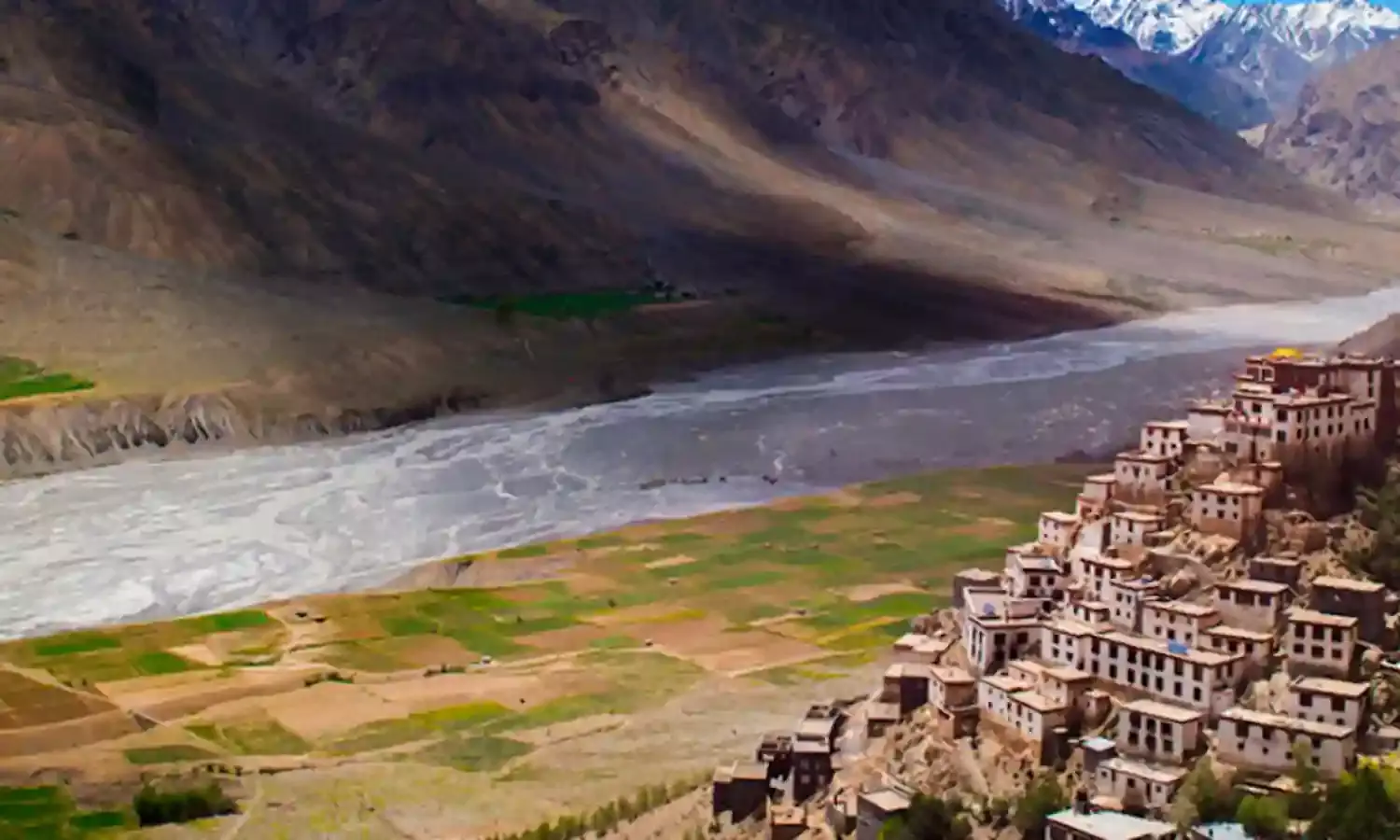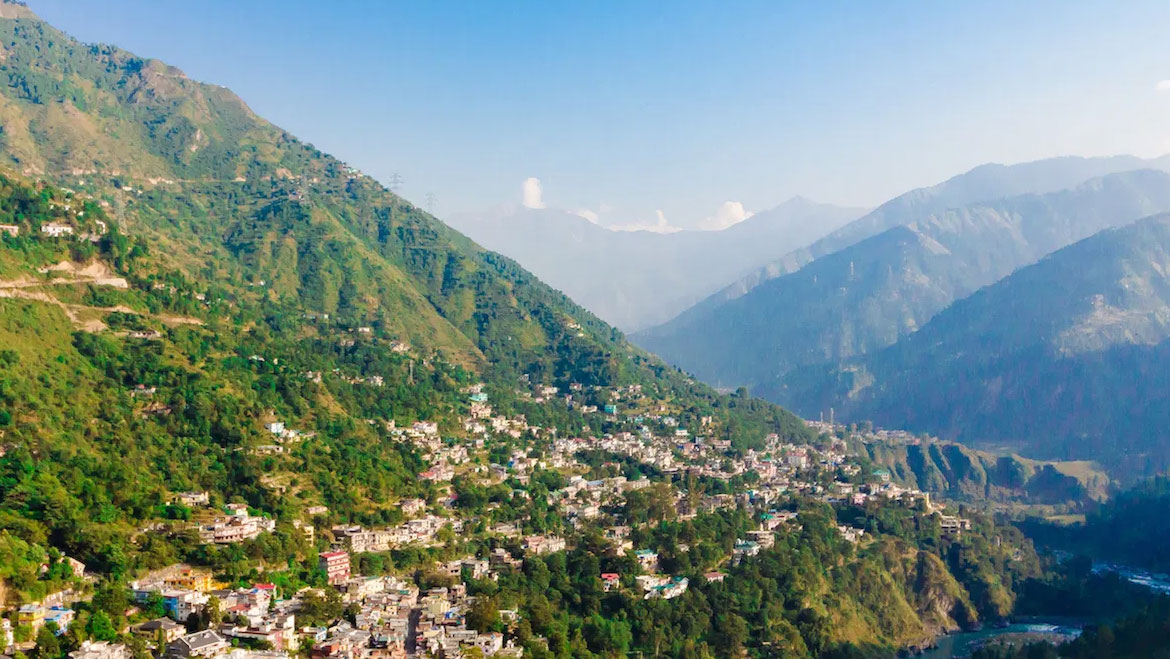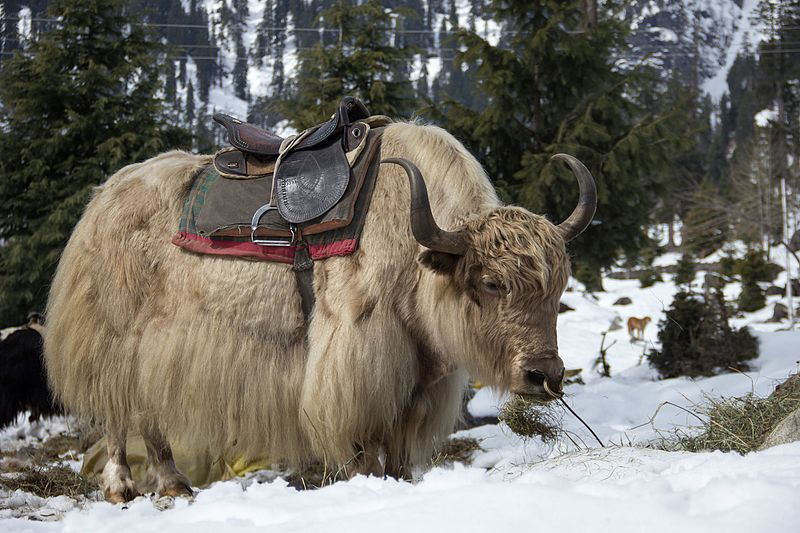The Blue or Wild Rivers - Havoc in the Hills
Himachal Pradesh

This monsoon the hill state of Himachal Pradesh has been witnessing multiple disasters ranging from flash floods to cloudbursts and massive landslides, with extensive damage to property and loss of life apart from narrow escapes. These disasters are both natural and unnatural in that they are caused by heedless human activity. Why are the hills being killed, and what can be done to stop the slaughter?
It is well known by now that riverbed encroachments that block the passage of water, massive tree-felling in the name of broadening roads, and tampering with the fragile ecosystem to generate hydropower mostly used by industry have all taken their toll. But there is a need to understand where it all began, and why it is that the damage continues.
Those versed in the history of the state and activists on the ground believe that until the 1980s things were still quite manageable: the state had witnessed land reforms under the leadership of its first chief minister Dr Yashwant Singh Parmar, and emphasis was being laid on developing agriculture, particularly horticulture.
Before going further some typical traits of the state need pointing out. Himachal is a place where relations between the people and the state have long been cordial. Its image is such that there is very little internal critique and shortcomings rarely come out, unlike other states. The image is of Devbhoomi or the Land of Gods, where people have faith in government and the model of benevolence thrives.
This is pretty evident in the few protests when properties were acquired to widen and four-lane roads, as people were content with the monetary compensation. It is a state where there haven’t been strong people’s movements in the recent past. We saw the paradigm shift after neoliberal policies were bought, and the model centered on profit-making took off.
As social activist Manshi Asher of Himdhara Collective told this reporter, “On one side we have the climate change crisis that has resulted in changing patterns of rainfall and other precipitation, temperature changes, melting of glaciers, formation of glacial lakes etc., and on the other there has been rampant construction activity and installation of so called development projects like those in the hydropower sector that have led to havoc in the hills.”
The construction has been such that besides the fragile zones, even towns like Shimla, Solan, Kullu, Manali, Mandi and Dharamshala stand threatened.
“The model of cheap land and labour took off when environmental laws were thrown to the winds. A lot of compromises were made and the laws were eased for ‘ease of doing business’. To be sure, if the environment impact assessment (EIA) for projects is done according to rules the chances are it would take a lot of time and even cancellation of proposed projects cannot be ruled out.
“But such a model cannot be good for those looking for monetary growth and fast results. The model that has come into existence is counter to science and social equity,” Asher explained.
With the bureaucracy becoming ever more powerful over the years, experts and activists say the emphasis has been on imposing various projects and models on the people of the state. When it comes to hydropower projects there is no emphasis on landscape design or understanding the fragility of the area where these projects are built.
The blasting of rocks and tunnelling of water have made the strata unstable to the point of threatening local livelihoods and lives.
It is the same when it comes to four-laning roads. Why add lanes, local people have been asking, when the purpose would be solved by a bit of widening, which would avoid the reckless felling of trees?
As for construction, town and country planning norms continue to be flouted with impunity, and the insights of structural engineering ignored.
“For the politicians, it is a compulsion to promise employment at the time of elections. When they cannot generate employment, the burden is shifted towards tourism. What we have now is irresponsible tourism, where buildings have come up recklessly to house the visitors,” Asher told The Citizen.
“It also needs to be kept in mind that it is the big companies which finance their poll campaigns, and they obviously want their pound of flesh when these politicians come to power.”
Rigzin Hayerpa, an activist from Lahaul, said “There is an immediate need to keep the fragile zones free of hydropower projects. The emphasis should instead be on promoting sustainable and green tourism where minimum construction is needed. What needs to be developed are eco-treks, eco-huts and eco-walks, with minimum government interference in running them.”

Activists like Kulbhushan Upmanyu from the Chamba valley in the north have a lot to share about the damage caused by four-laning and widening roads. Upmanyu says the majority of these projects are executed in an unscientific manner, by a contractor left free to ignore all the precautions that need to be taken.
“The budget earmarked for scientific dumping is diverted elsewhere. The muck is dumped haphazardly without building any retaining wall to stabilise it, and in the event of cloudbursts or flash floods it is this that creates maximum devastation.
“The mass accumulated leads to landslides and massive erosion of the hillside. In fact there is a need for technical evaluation and fact-finding of all the incidents of cloudbursts, landslides and flash floods that take place,” he tells The Citizen.
He points towards the Kalka-Shimla railway line that sees occasional landslides. “Take for example the Pathankot-Jogindernagar road developed by the British. They ensured that there was proper draining of water on the Kotla-Nurpur stretch that is very fragile.”
“It is the cut and fill method, along with construction of a retaining wall that needs to be adopted when there is cutting of hills done for widening or building roads. Of course the costs will go up a bit, but there will be several long term environmental benefits.”
Upmanyu goes on to say we need to understand the massive slaying of forests that goes into every hydropower project set up. No proper impact analysis is done.
“The most unfortunate thing is that when it comes to the EIA, not only is the exercise not carried out properly but the authorities and administration are often found standing with the project developers instead of the people. There is no attention paid to the threats to the people and the environment.
“There is a dire need to sensitise the administrative officers on this issue. Moreover there is a need to develop a monitoring system that is both transparent and strict. In fact there should be boards put up at various sites specifying the penalties for various wrongdoings, and even those penalised should be publicised,” he said.
People in Kinnaur, who have suffered maximum devastation caused by hydropower, are running a powerful campaign against the blind government policy of installing ever more hydropower projects that rarely gets reported in the corporate media.
Sunder Negi, a young activist from the district warned, “If hydropower projects are not halted in the district, the place will no longer be safe for living. We have seen disasters like the recent killing of nine tourists in a landslide, even in places where there are no hydro projects. One can imagine the threat level in fragile areas where the projects are being installed.
“We have witnessed large scale deforestation in areas where high-tension wires pass through forest land. This is threatening both our livelihoods and our right to live. Our rights under the Forest Rights Act and other special laws are being denied, and people are often being misled on such issues,” he emphasised.
Negi said that instead of hydropower, the emphasis could be on developing village-based green tourism that will address the concerns of the people who live here.

“The river is a defining feature of a mountain ecosystem. And if that ecosystem is the Himalayas then this makes the rivers originating here special for several reasons. Their origin and source to start with, which includes glaciers and snow bound peaks; their length and size, and the area they cover is larger than most peninsular rivers; their rapid, high velocity, meandering flow which is constantly shaping the young and malleable Himalayan valleys; their propensity to carry silt and form rich plains to facilitate a fertile agriculture downstream is another unique feature.
“The Himalayan rivers are older than or as young as the Himalayas themselves. And yet, despite the sense of power and reverence they command and convey and all the life they support, they are vulnerable. This vulnerability is rarely spoken of.
“The slightest variation and changes in temperature, flow, course and composition of the rivers impacts its surroundings, and the shifts in the landscapes in turn impacts all these aspects of the rivers, such is the degree of interdependence and fragility.”
This landmark study by Himdhara in early 2017 analysed the damage being done to the health of rivers in the state. Dried and Dusted: A State of the Rivers Report for Himachal Pradesh goes on to state:
“Most text books and articles largely highlight the magnitude of the Himalayan river systems and move on to speaking, anthropocentrically, of their energy and irrigation potential, along the lines of what can we squeeze out from them for furthering the cause of ‘human development’. Rarely ever are these seen as riverine ecosystems that are already providing services and support life systems.
“Today, we speak of interlinking these rivers but fail to see the existing natural interlinkages between not just the rivers but among all life forms, the benefits of which are drawn by human beings as well. If these rivers are stressed out, if they are tampered with, if they are tunnelled and dammed, what would after all be the impact of all other dependent systems?”
The key threats identified by the experts who brought out the report were developments interfering with river flows, hampering riverine ecology and changing the nature of the river and its dependencies. These include hydropower development, sand mining, pollution due to tourism, urbanisation and industrialisation, and global heating.
“We have looked at each of these developments for the five river basins and made a threat projection - critical, moderate or low. According to the report, the Beas, Satluj, Yamuna and Ravi are the most threatened river basins. The Chenab as of now and Upper Satluj, with Spiti as the main tributary along with parts of Beas, like the Tirthan are the only wild and free flowing rivers in the state,” the writers say.
“The report recommends that the blue or wild rivers need to be protected from these threats and a plan of action needs to be made for the same. At the same time, the areas where there is moderate threat an effort needs to be made by the regulatory agencies - Forest Department, Pollution Control Board and the State Environment Department to take action.”
The expert report says that regulatory agencies like the Pollution Control Board for instance refer to rivers as ‘surface waters’, assess their health by measuring parameters of ‘water quality’ like dissolved oxygen, acidity, colour, temperature, the presence of heavy metals. They say the definition of a ‘river’ needs reviewing, as it comprises not just the water but the entire riverine landscape.
“No doubt the water quality is indicative of the health of the river, but the perspective on the river needs to be widened to include a larger body of information as well as a spatial and temporal mapping of the river and its course,” they write.
Referring to the cascade of projects on a single river causing the obstruction of its natural flow, the report says:
“It is important to note that the projects using this technology are being built in a cascade form on a river basin. This means that at the tail of one project, the head of the next is located. A series of these projects are being built bumper to bumper on the streams and rivers to harness the capacity of the rivers to produce power to its maximum.”
The projects also necessarily involve tunnelling:
“In the Satluj River Basin alone the total length of tunnels once all the planned hydro projects are built will be 185 kms. If all the planned projects in Himachal and across the Himalayas are constructed there will be hundreds of kilometers of tunnels underneath the mountains in this region.”
This is perhaps the most serious issue considering there are hardly any long stretches of the rivers Ravi, Satluj, Beas and Chenab that will be free-flowing once the government and contractors build all the projects they are planning.
This is bound to lead to an ecological crisis in the long run.
The muck generated by these hydro projects is being dumped along the riverbeds, says the 2017 report, which has disturbed the natural course of major rivers. In times of floods this has caused serious devastation to property, land, livestock, and riverine flora and fauna.
All this brings to a very important observation made by Manshi Asher:
“Ecological issues cannot be looked at and resolved in isolation. They are very closely linked to the economic, political and social domain of an area. Unfortunately, attempts are made to resolve them in isolation and that further leads to more confusion.”
She told The Citizen that the human-nature relationship cannot be addressed through technology.
“Right now there is talk of shifting from hydropower to developing solar power in Lahaul and Spiti district. But it needs to be analysed that for developing solar power and installing reflectors, what will be required is large pieces of land.
“This land is right now being inhabited by yaks also and snow leopards also, besides being the pasture for other animals, and is thus linked to livelihood of people. All this needs to be kept in mind.”

Captive yak, Manali



